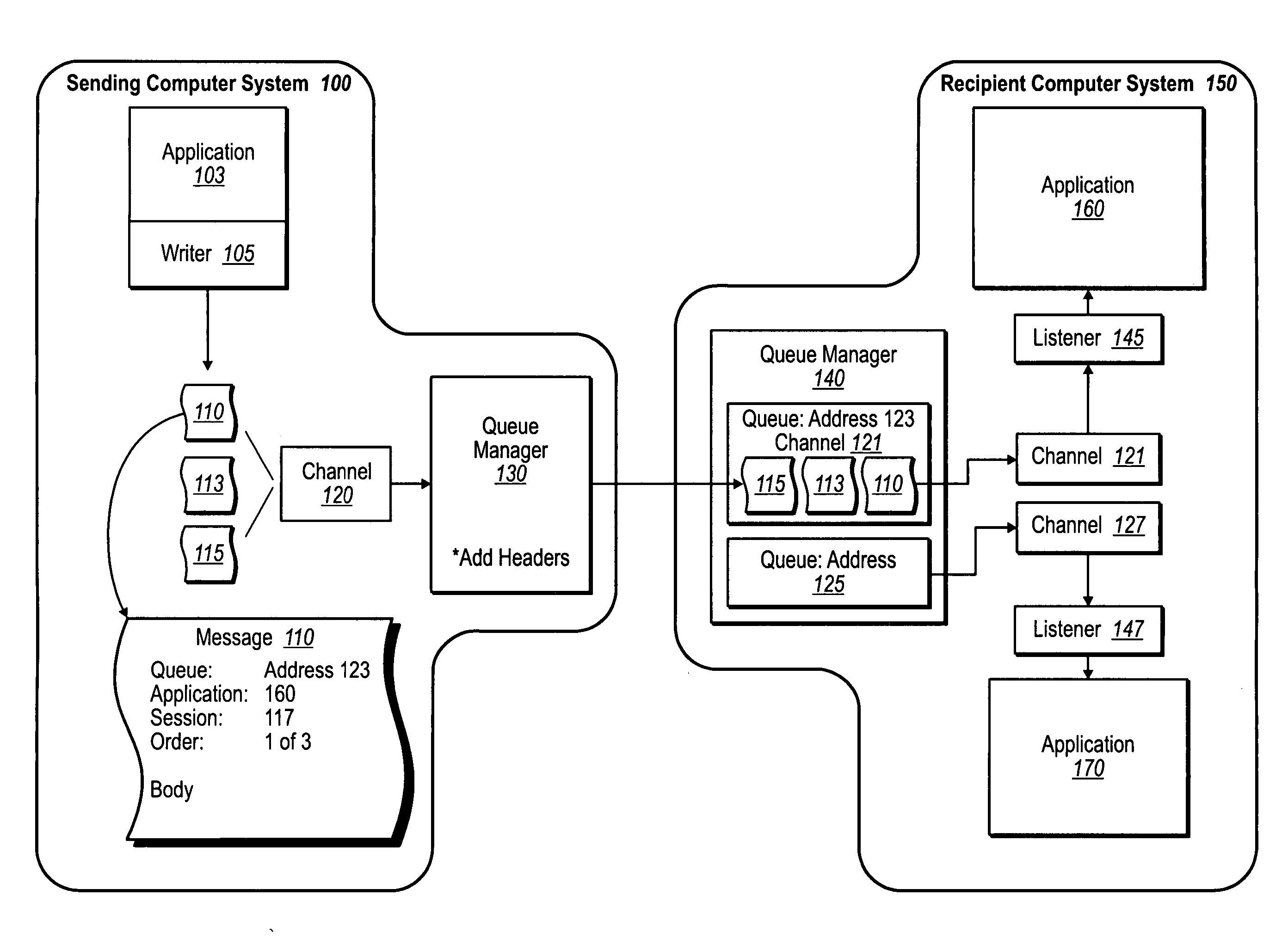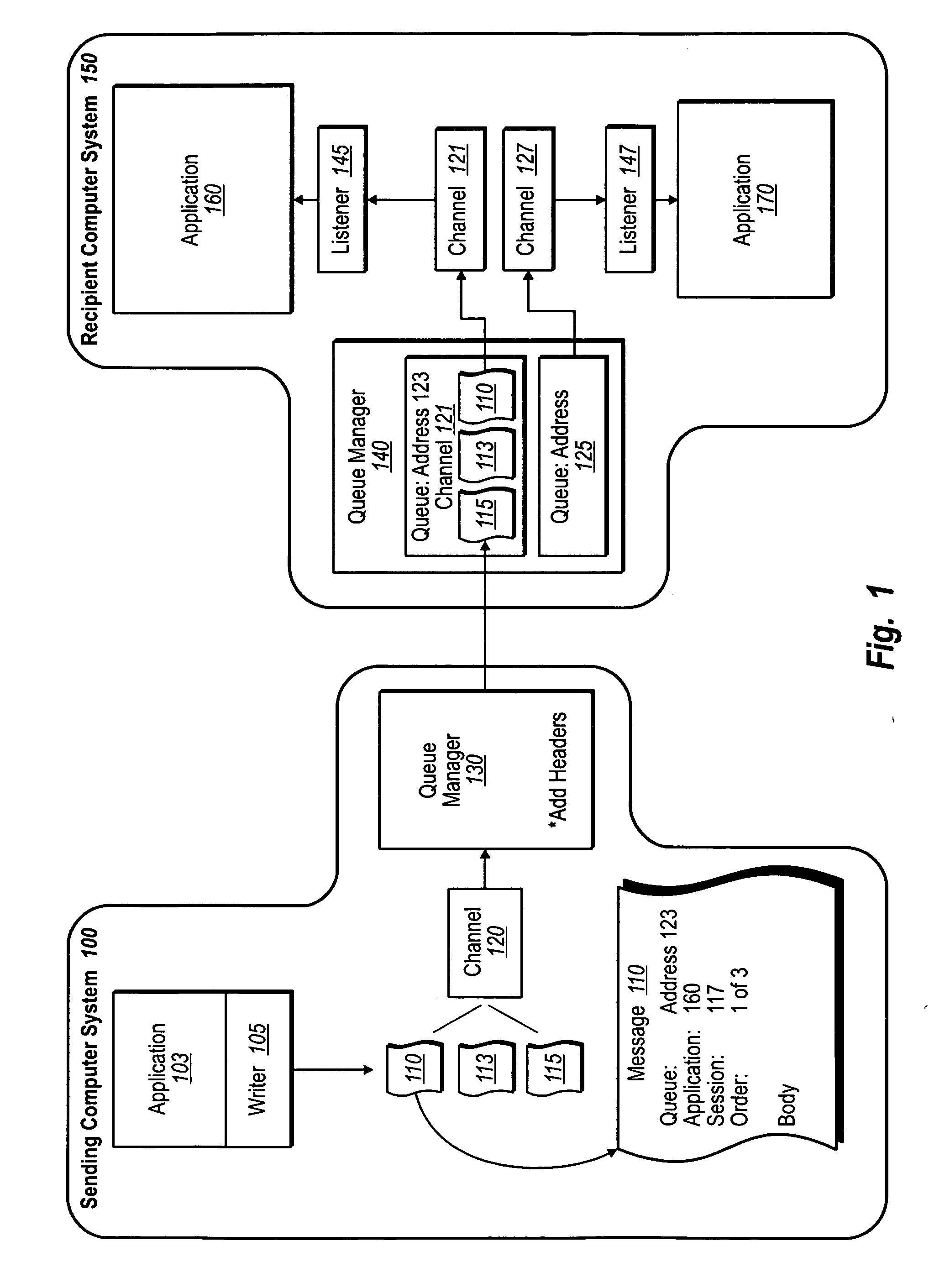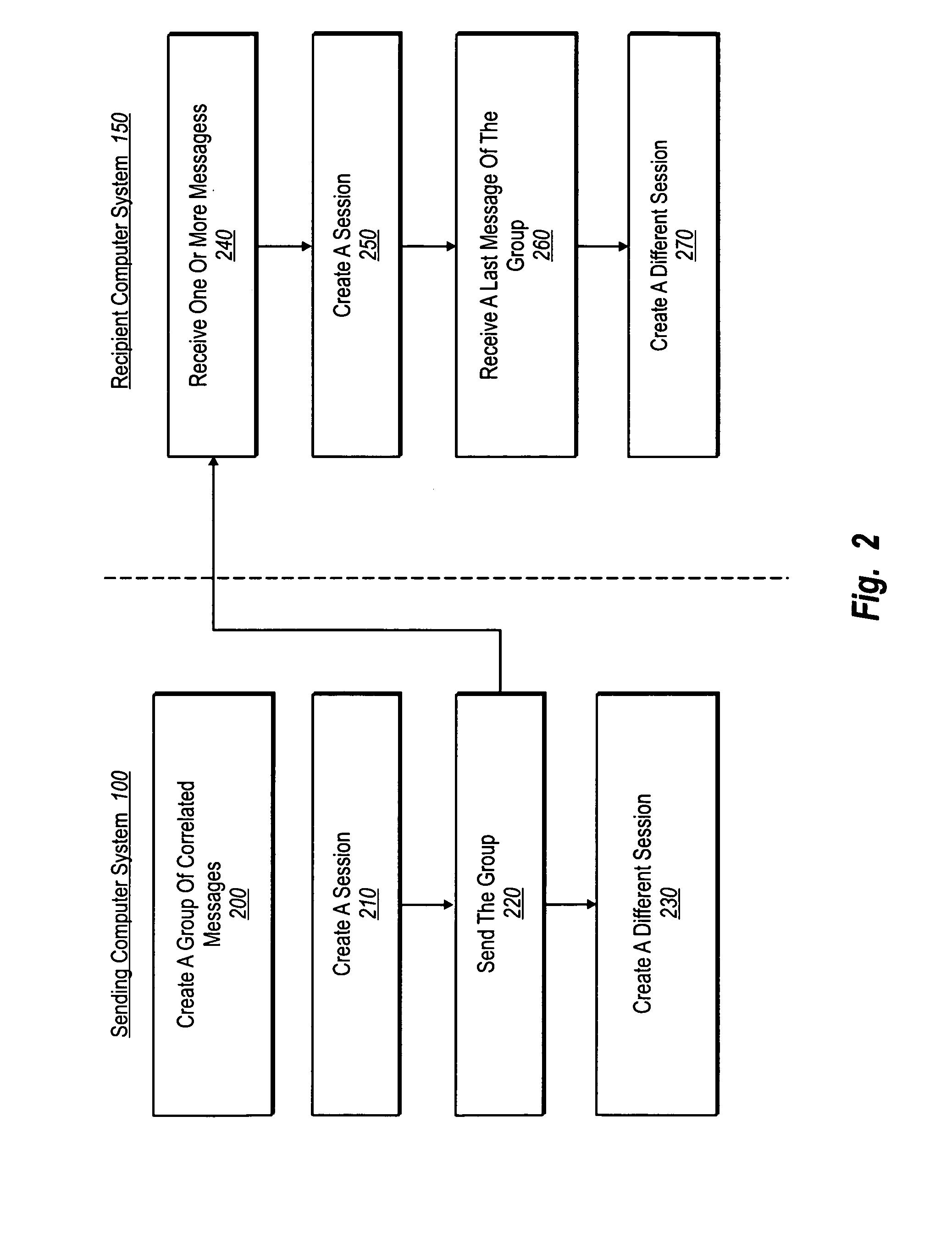Queued sessions for communicating correlated messages over a network
a network and message technology, applied in the field of queued sessions for communicating correlated messages over a network, can solve the problems of a number of problems in the conventional system for receiving, forwarding and processing messages, and the increase of the interconnection of computer systems on the network
- Summary
- Abstract
- Description
- Claims
- Application Information
AI Technical Summary
Benefits of technology
Problems solved by technology
Method used
Image
Examples
Embodiment Construction
[0020] The present invention extends to systems, methods, and computer program products that allow messages to be communicated in a correlated fashion as intended by queuing related messages through discrete communication sessions, and session-oriented channels. In particular, systems and methods in accordance with the present invention allow messages to be sent from one application to another in discrete communication sessions, such that a recipient computer system can process different groups of messages appropriately.
[0021] For example, as will be understood from the present specification and claims, one aspect of the present invention involves combining aspects of queuing protocols with general aspects of communication sessions. Another aspect of the invention involves preparing and receiving correlated messages to be sent to specific queues, and then processed in a correlated fashion by a single processing node, or application. Still another aspect of the invention relates to ...
PUM
 Login to View More
Login to View More Abstract
Description
Claims
Application Information
 Login to View More
Login to View More - R&D
- Intellectual Property
- Life Sciences
- Materials
- Tech Scout
- Unparalleled Data Quality
- Higher Quality Content
- 60% Fewer Hallucinations
Browse by: Latest US Patents, China's latest patents, Technical Efficacy Thesaurus, Application Domain, Technology Topic, Popular Technical Reports.
© 2025 PatSnap. All rights reserved.Legal|Privacy policy|Modern Slavery Act Transparency Statement|Sitemap|About US| Contact US: help@patsnap.com



